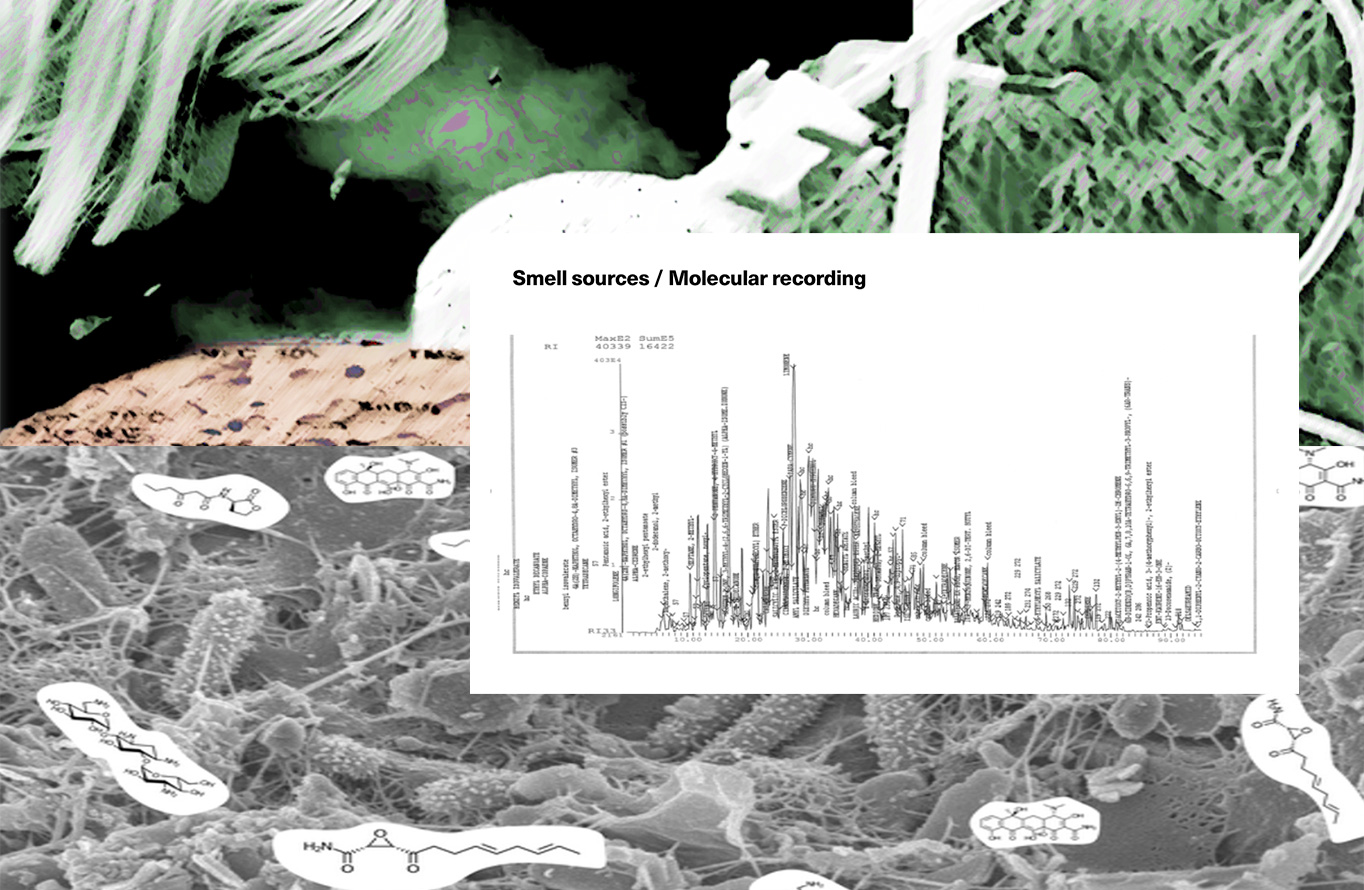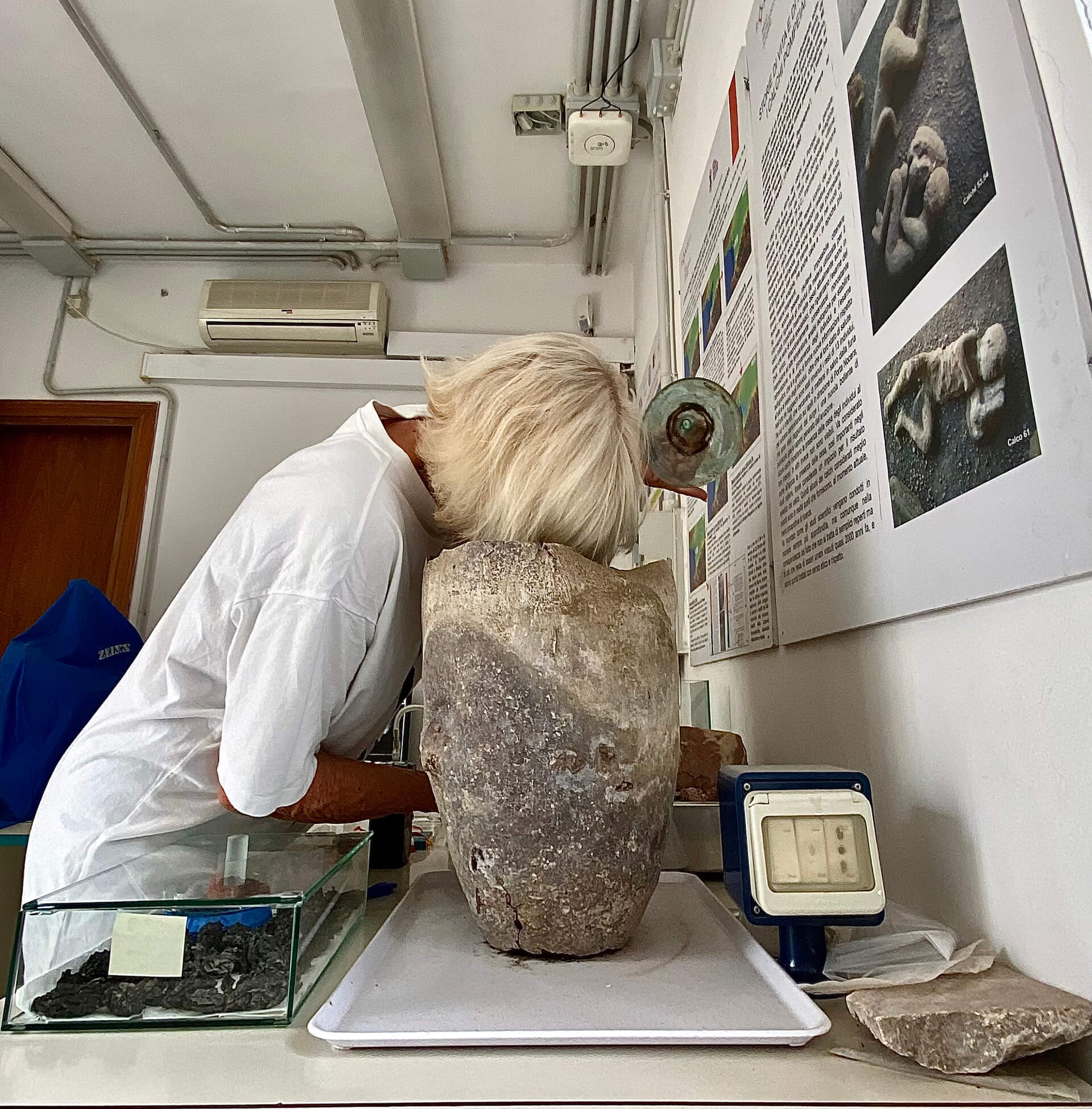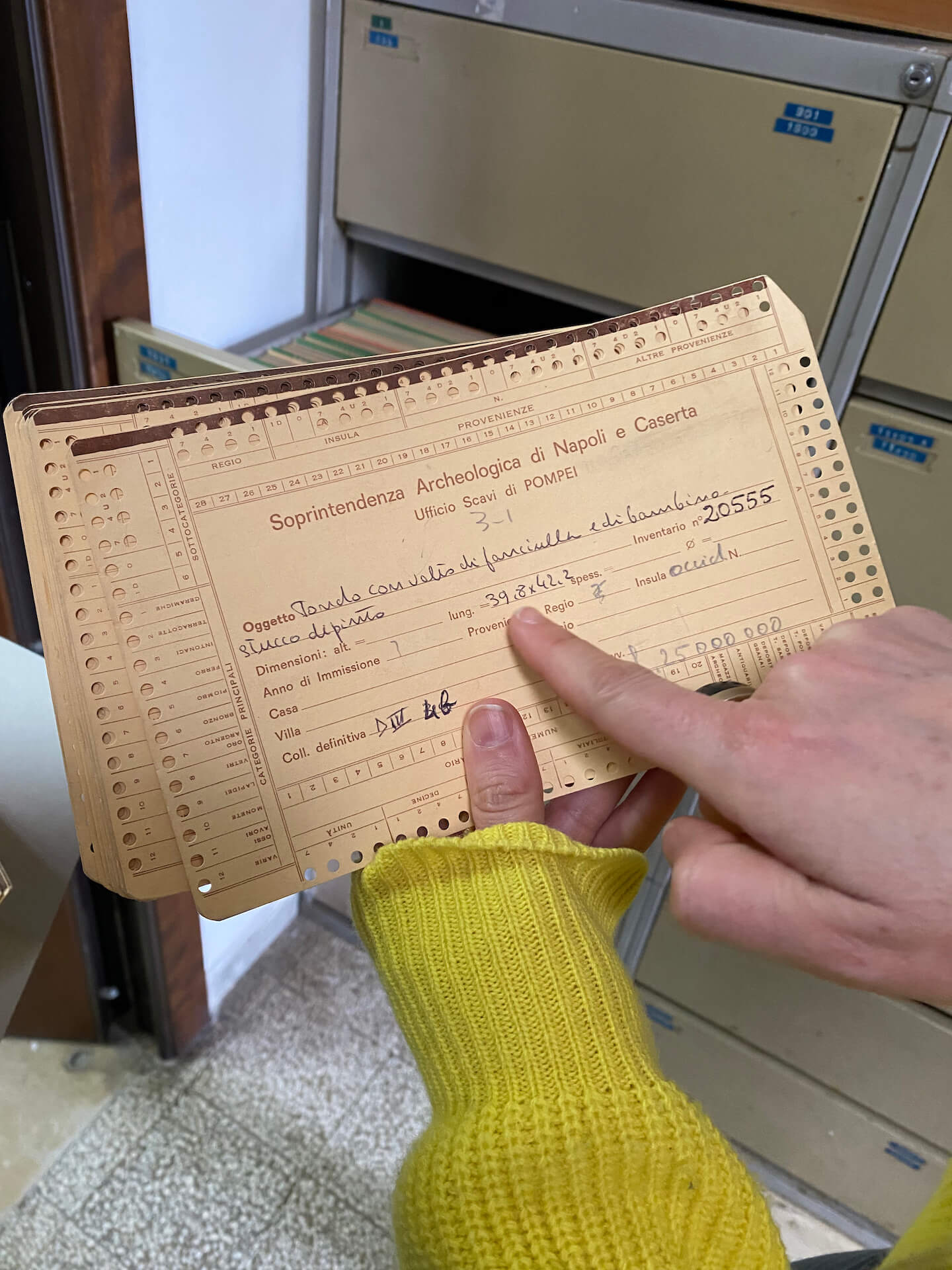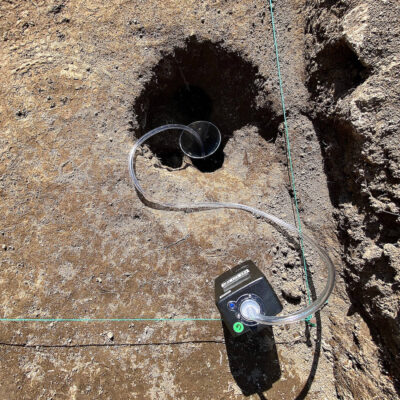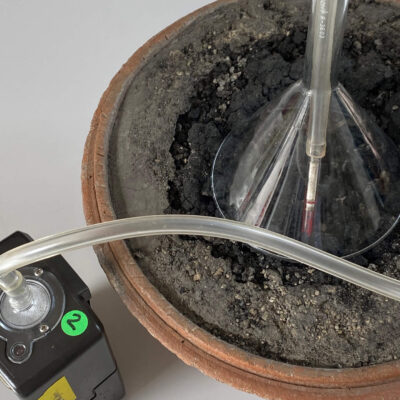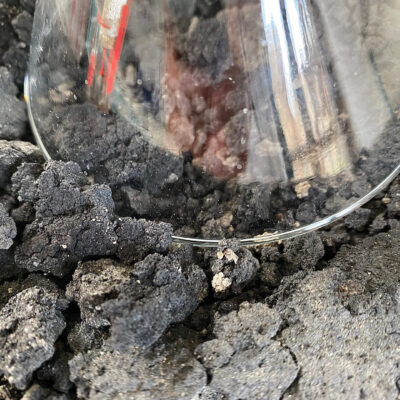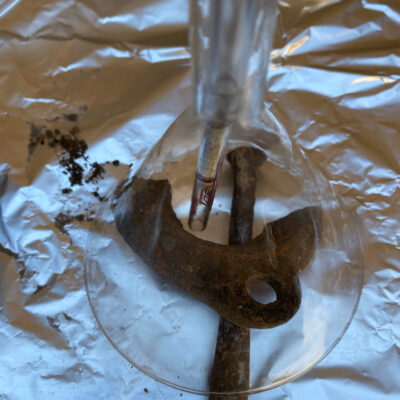What if it were possible to have an olfactory experience of the past through the ruins? What kind of history would be told? These are just some of the questions underlying Invisible Pompeii, an ongoing investigation into the possibilities of olfactory heritage by Sissel Tolaas, conceived and commissioned by the Nicoletta Fiorucci Foundation, Team Partner of Pompeii Commitment. Archaeological Matters. Started in 2020, the research project examines what the artist calls “smell heritage” — meaning the olfactory heritage enclosed in the archaeological site — and starts from the assumption that the sense of smell is an essential part of the human experience and an important tool for understanding both the present and the past. The sense of smell is more closely linked with memory than any of our other senses. Smells trigger strong memories, while new essences are the basis for memorizing the present. World leader in this field, Tolaas is interested in the molecular sampling and subsequent analysis of the data enclosed in the olfactory molecules which, precisely as emitted by everything and everyone, offer an unprecedented testimony of a given environment, as well as further methods and means of interacting with the world and its history.
During the course of two molecular sampling sessions at the Archaeological Park of Pompeii in 2022, Tolaas obtained molecular smell recordings of artefacts of various kinds — an olla with slaked lime from the insula occidentalis, an unguentarium, volcanic soil, bread and an incense burner, to name a few — flanking both the archaeologists assigned to the excavations sites of Terme del Sarno (VIII 2, 17-23) and Casa degli Archi (I 17,4), and the team of professionals encharged of the Applied Research Laboratory at the Archaeological Park of Pompeii. Upon completion of the analysis of the results of the molecular smell recordings, the research and methodological development initiated by Tolaas will be crowned by the production of a new artwork consisting of a series of Smell Artifacts, which will offer to the public the opportunity to experience a series of odors present in Pompeii in the temporal dimension of 79 AD. These aim to contribute to forming other ways of cataloging, as well as initiating the first smell archive of Pompeii, which will be presented in situ in autumn 2023.
The Digital Fellowship published online on pompeiicommitment.org starting from the 27the June 2023 and a special preview of the project presented at the Serpentine Summer Party 2023 on the same date, constitute two pivotal moments to articulate the artist’s research in its complexity and to introduce the idea that the nose is not just a physical part of our body, but also an instrument for intellectual understanding. By suggesting that the sense of smell constitutes a potential archaeological research tool, the artist approaches Pompeii as a site that goes beyond the solid. Tolaas’ work — both scientific and narrative— reveals a series of data that not only consider the traces of the Pompeian finds, but also their eco-facts and bio-facts as part of a collective constellation of living agents. Quoting the artist herself: “We live in a world that’s driven by language and image. Semiotic, semantic, and eye pixel. We’re all speaking about interconnectivity. We are interspecies. But how do we do it? How do we understand different type of information? How do we use this fact to tell the story we thought we knew? It would require applying different types of science, and also art, to a solid context, content and knowledge, challenging other ways of doing things, other protocols and methodologies. Possibly, we will write them together (not just me, myself, and I), getting access to a context, content and knowledge that otherwise Pompeii would never have had.”
A first part of Sissel Tolaas’ Digital Fellowship, is characterized by visual and graphic documentation linked both to the methodology of the artist and to the data relating to the molecular samplings carried out at the Archaeological Park of Pompeii. To follow, there will be a textual contribution by Andrea Viliani published at a later time and part of Flash Art Italia Estate n.361, in which Tolaas tells how smell can encompass both the poetics and emotion intrinsic in this sense, and the chemistry and the scientific analysis linked to its study. These, combined, can generate a tool-kit for a multisensory knowledge of historical heritage. Even a simple breath can be captured and rendered collective memory. CA – SB
Sissel Tolaas’ Digital Fellowship is part of the artist’s physical research project conceived and commissioned, in the context of Pompeii Commitment. Archaeological Matters, by the Nicoletta Fiorucci Foundation, Team Partner of the programme. The Digital Fellowship is developed in collaboration with Flash Art. As a culmination of this research, a new artwork by Tolaas will be presented at the Archaeological Park of Pompeii, Italy in Autumn 2023.
1. Image:
Sissel Tolaas in her Studio, 2022
Courtesy the Artist
2, 3, 4, 8. Text:
Sissel Tolaas on her Methodology, 2022
Courtesy the Artist and Nicoletta Fiorucci Foundation
5, 6, 7, 9, 10. Images:
Documentation of the Molecular Sampling Activity Carried out by Sissel Tolaas in Situ at the Archaeological Park of Pompeii, February/September 2022
Courtesy the Artist and the Archaeological Park of Pompeii
Photo Sissel Tolaas
Home Page Image: Sissel Tolaas, Volcanic Lava with Microscopic Air Bubbles, 2023. Courtesy the Artist and Nicoletta Fiorucci Foundation


Sissel Tolaas has been working, researching and experimenting intensely on the subject of smell since 1990. Tolaas is considered an authority in the field of this scientific and artistic research, with important collaborations and exhibitions including: dOCUMENTA (13), Kassel; MOMA New York; MOMA, San Francisco; Fondation Cartier, Paris; Serpentine, London; Hamburger Bahnhof, Berlin; Tate Gallery, Liverpool; Venice Biennale; Kochi Biennale; TBA21, Thyssen Bornemisza Art Contemporary; National Art Museum of China, Beijing; Cooper-Hewitt Museum, New York; Minsheng Art Museum, Shanghai; Art Institute of Chicago; Architecture Biennale 2015, Seoul, Shanghai & Venice; Time Museum, Guangzhou; Louisiana Museum, Copenhagen.
Her projects and research are among others in the field of: climate, heritage, inequality, geopolitics, sensory ecology, biology, archeology, anthropology, Anthropocene. Tolaas has also worked with leading universities and research institutions and platforms including the Massachusetts Institute of Technology; Max Planck Institute; Nanyang Technical; Harvard University and Oxford University. Among the numerous prizes awarded to Tolaas: CEW New York 2014 Chemical Innovation Award; Rouse Foundation Award 2009, Harvard GSD; Ars Electronica Award 2010; Synthetic Biology / Synthetic Aesthetics, Stanford University, Oxford University & Harvard Medical school, 2010-2011-2012-2014. In 2004 Tolaas founded, with the support of IFF (International Flavors & Fragrances Inc.), the SMELL RE_searchLab in Berlin, a research laboratory whose goal is to record, replicate, investigate smell molecules and smell complex structure and to propose an alternative communication system: CHEMICAL COMMUNICATION. Tolaas has built multiple archives over the last 25 years, including: thousands of recordings of complex smell sources and individual molecules; language and para-phonetics sound; coding and function. Tolaas’ Mission: “There is a whole World to smell & a whole World to educate how to smell.”
Sissel Tolaas
27 • 06 • 2023 
